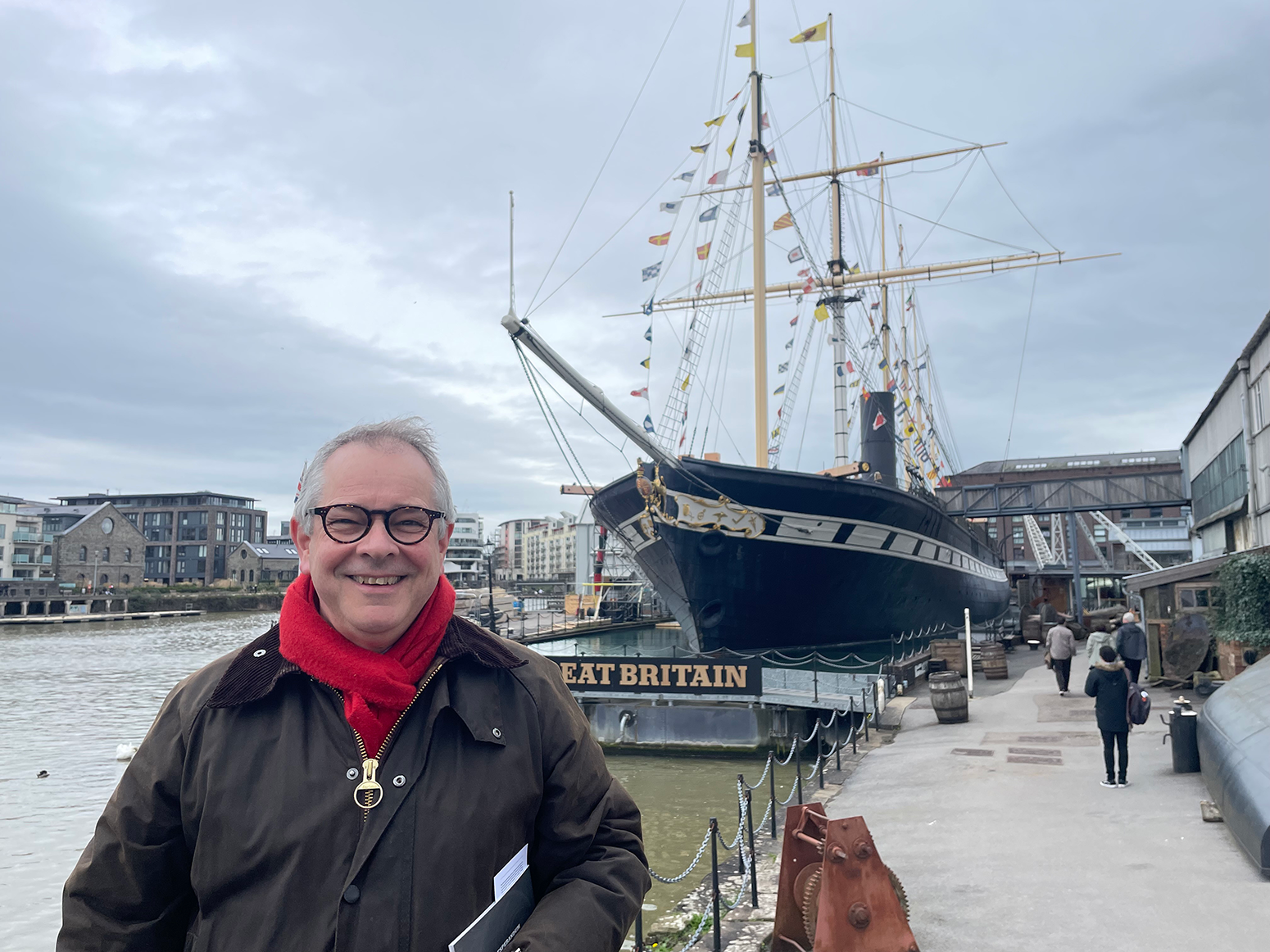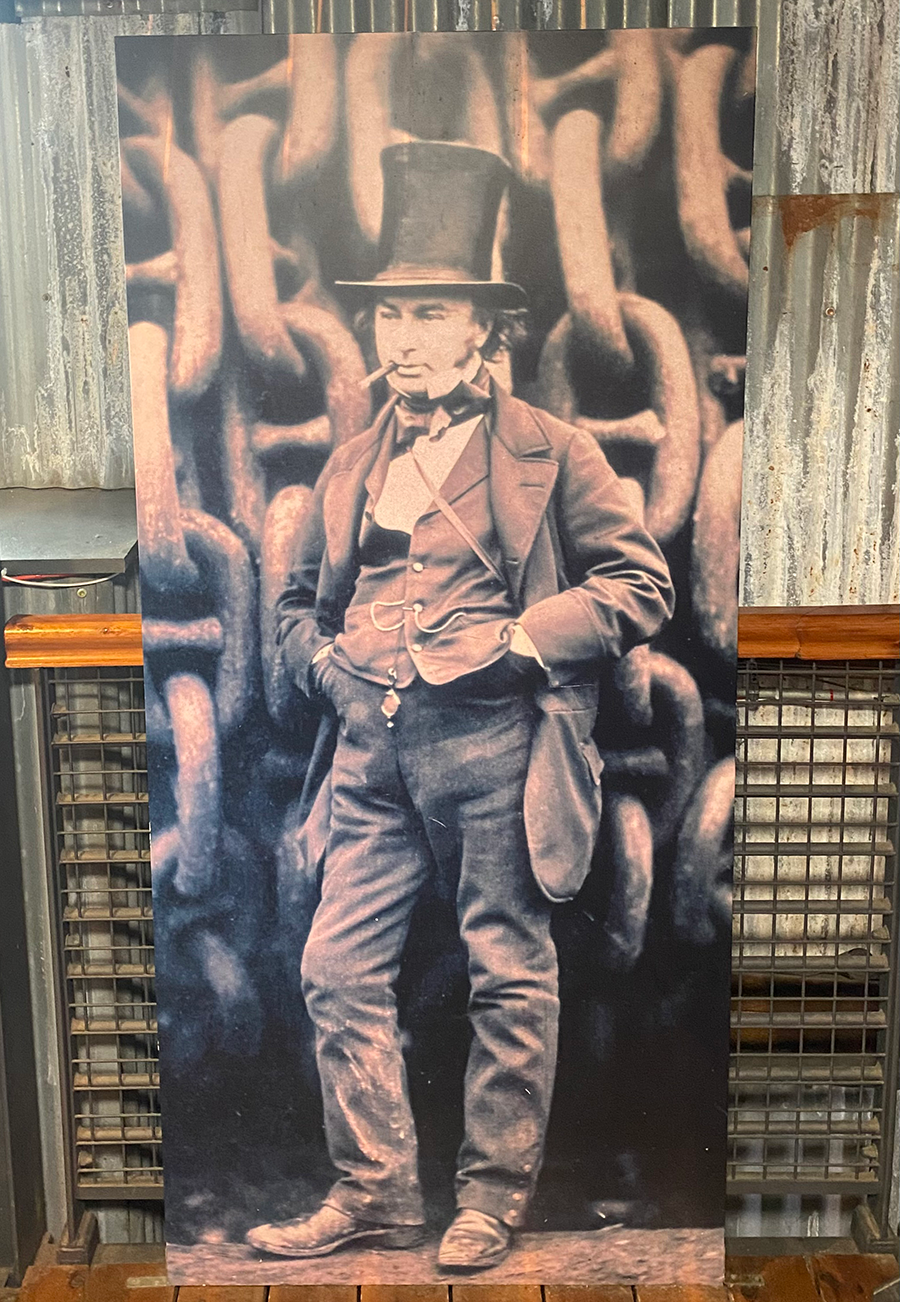
The 19th century visionary and engineer, Isambard Kingdom Brunel (1806-1859), has been described as the nation’s most important engineer and was a key figure in Britain’s Industrial Revolution. Sussex has some claim to this remarkable figure as Brunel’s early schooling was at Dr Morrell’s boarding school in Hove before being educated in France.
He is famous for building the Great Western Railway (GWR) pioneering the 7ft 1/4 inch Broad Guage and constructing the line with carefully surveyed gradients, new viaducts, bridges and the revolutionary 2 mile box tunnel. He had a gift for thinking on a grand scale and revolutionised modern engineering and transport. There was astonishment when he proposed to continue the GWR to America.
Brunel designed and built the Clifton Suspension Bridge and three transatlantic ships. SS Great Britain was the second of these vessels. An iron-hulled ship with a steam driven propeller it revolutionised naval engineering and is considered to be the world’s first modern ship. She was launched amidst much fanfare by Prince Albert in July 1843 who travelled down from London on a Great Western train which made the journey from London to Bristol in just 2 hours 40 minutes. It took two more years to complete Great Britain and in 1845 she set out from Liverpool for New York and became the first steam driven propeller ship to cross the Atlantic. Measuring 322 feet in length she was the largest ship afloat at the time of her launch.

A navigational error caused her to run aground in 1846. She was salvaged and from 1852 carried emigrants to Australia. In 1881 she was converted to all-sail and the engines removed to make way for more cargo. The masts and sails were on an enormous scale. Just three years later she was retired to the Falkland Islands where she was used as a warehouse and coal hulk. This grand old ship was finally scuttled in 1936.
In 1970 the British industrialist and philanthropist Sir Jack Arnold Haywood, OBE paid for Great Britain to be refloated and brought back to the dry dock in Bristol where she had been built some 127 years earlier.
Today the scale of this grand old ship still impresses and the historic dockyard and museum eloquently give voice to her story. Going aboard the ship the experience is immersive and you feel you have travelled back in time as you walk past the engines, the grand first class dining hall and below decks promenade, to the more cramped conditions of the steerage class.